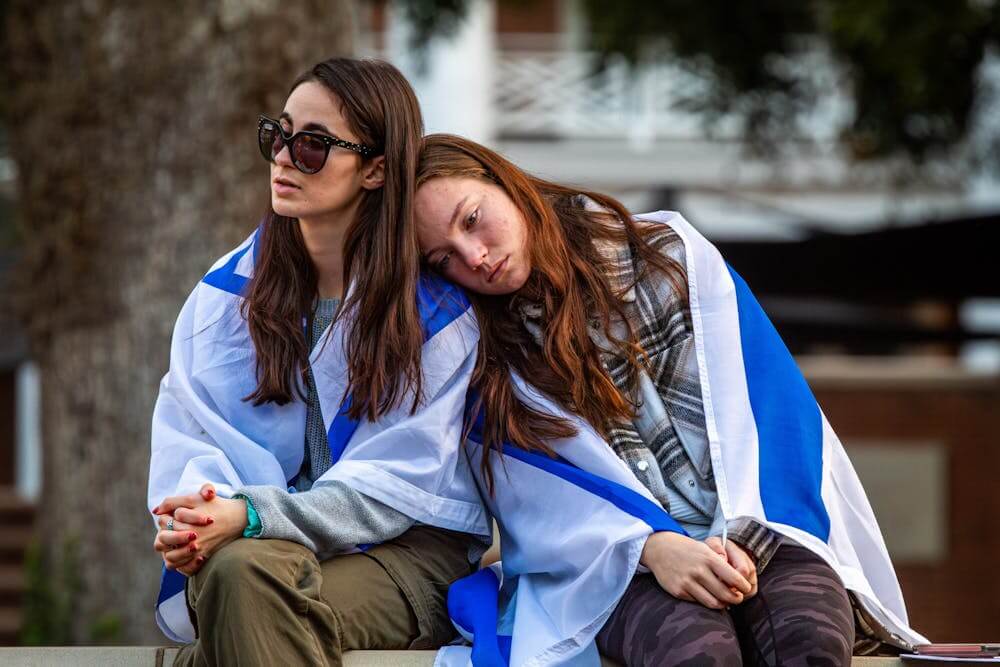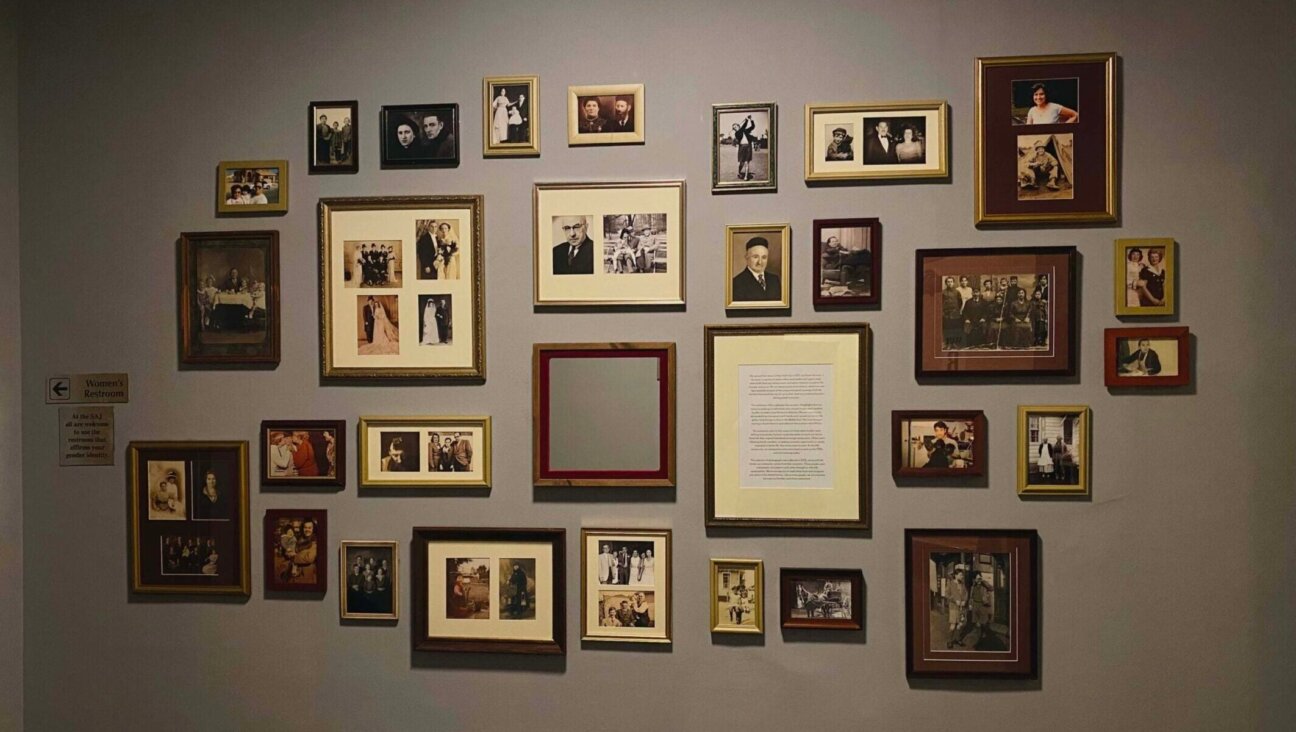Fighting antisemitism, and mass incarceration: Talking with Udi Ofer of the ACLU

Image by Getty
One of my last memories from the pre-pandemic era is of meeting Udi Ofer, the head of the ACLU’s Justice Division, in February 2020.
Ofer and Rabbi Julie Roth, director of the Princeton Hillel, gathered roughly a dozen students for a series of events reconsidering the Passover exodus in light of contemporary mass incarceration.

Udi Ofer
Of course, by the time Passover arrived, every student had been sent home. But Ofer and Roth’s gatherings continued online. Ofer’s dynamic indictment of America’s racial caste system and injustice stuck with me, especially as the spring gave way to a summer of unrest and uprising following the police killing of George Floyd.
As the nation reckons with Derek Chauvin’s conviction for Floyd’s death, and two recent police killings — of Daunte Wright, an unarmed Black man shot in Minneapolis, and Ma’Kiah Bryant, a Black teenager shot in Columbus, Ohio — Ofer gave me his perspective on recent events as a leading Jewish activist fighting against mass incarceration. The following conversation has been edited for length and clarity.
What inspired you to go into human rights law?
I grew up in Israel until the age of six. My family moved to the United States for two years, then we returned to Israel, and back again. I’ve been in the U.S. permanently since I was a fifth grader. When we moved to the U.S., I had to go to Hebrew Day School because I spoke no English.
I think my story is tied to my immigrant experience. I’m a white male immigrant, so I recognize that I had a different immigration experience than others. But when my family first moved to New York, there were five of us in a one-bedroom apartment. I think growing up with an atypical name, and not speaking English when I got here, that’s still a big part of my identity.
Both of my parents were born in Eastern Europe and faced a lot of antisemitism. The Holocaust was a major part of our familial identity; there were people, on both sides of my family, who were killed by the Nazis.
I was a bit obsessed with the Holocaust, growing up. I remember reading the “Rise and Fall of the Third Reich” when I was 13, which in retrospect, was a crazy book to read at that age.
I remember when I decided to become a human rights lawyer. I was at the D.C. Holocaust Museum. And I remember sitting there, thinking that I want to dedicate my life to not allowing another genocide to happen, not allowing for this type of fear-mongering and discrimination to lead to the oppression of so many people. And as I grew up, I began to connect the Holocaust to the current reality.
Tell me more about how your Jewish background affected your politics.
I lived in New York City during the Giuliani years, in the height of the broken windows policing era, and the harassment of Black and Latino communities was a major part of that. The brutalizing of Abner Louima and the killing of Amadou Diallo by the New York City Police were major turning points in my political awakening.
I actually started my career working at a domestic violence shelter right after law school. But then the attacks of September 11, 2001 happened, and the resulting backlash on civil liberties. As an Israeli, this looked familiar to me — being asked to sacrifice civil liberties in the name of national security. So, I joined the New York Civil Liberties Union to fight back. I started the Bill of Rights Defense Campaign there, which worked to protect the rights of Arab, Muslim and South Asian New Yorkers who were being targeted by the NYPD, immigration services and FBI, and to protect free speech.
One of my favorite Passover memories is a potluck my friends and I put together with a Haggadah about the Iraq War. We talked about the liberation of the Jewish people, but also the war, and discrimination against our Muslim and South Asian peers.
Mass incarceration is another example of this. We celebrate the ancient Jewish people’s exodus from Egypt. Yet today, we have millions of people who are in this country, behind bars, living in cages, deprived of their freedom, and separated from their families and their loved ones.
Why should the Jewish community not be afraid of slogans like “defund the police?”
Look beyond the slogan and you will see that, substantively, this is about saving lives.
The biggest hurdle I face in my work is the dehumanization of incarcerated people and people who are killed by the police. The United States has the highest incarceration rate in the world, and police in the United States kill civilians at much higher rates than other wealthy democracies.
The police defund movement is trying to stop these killings by creating alternative public safety systems, which as a first step requires limiting the role of police in America.
There are more than 10 million arrests a year in the U.S., about one every three seconds. Yet only about 5 percent of the arrests have to do with violent acts, things like murder, rape, robbery, etcetera. 95 percent of what police actually deal with every day do not involve violence and are mostly low-level offenses. Things like disorderly conduct, loitering, being drunk. There are more than 1.3 million arrests a year for drug possession, nearly three times as many than the arrests for all violent crimes combined.
But that’s not the type of policing you see in white affluent communities. I live in Princeton, N.J. Almost no white people are arrested for disorderly conduct, cannabis possession pre-legalization, or loitering. But when you go into heavily policed, low-income, Black and brown neighborhoods, that is what police focus on. Their theory of policing is about maintaining “order,” and it’s enforced through dehumanizing and violent tactics.
We need to build alternatives. In most cities if there’s someone who is ill, yelling on a street corner, making you feel unsafe, your only option is to call the police. But their job is not to be a social worker, nor should we want them to be.
We need to transform the way we think about safety and harm. That starts by removing police from so much of what they do today and creating alternative public safety systems. This will lead to fewer cases of police killings, because they won’t get involved in situations that now lead to deaths, like in the case of Eric Garner, who was killed by the police over selling loose cigarettes.
What is the right response to hate crimes and antisemitism, if it’s not cops outside of synagogues?
I want to challenge the Jewish community to rethink how we approach hate crimes. We can demonstrate an alternative vision of safety. I don’t think we can incarcerate our way out of antisemitism.
I still see so much clamoring, including from within the liberal Jewish community, whenever there are hate crimes, to immediately crack down as much as possible. I understand that instinct, but I disagree with it.
Incarceration will fail to address the underlying bias that has led to an attack against a shul, or a Jewish person. Passing laws that will lock people up for an additional five, 10 years for hate crimes isn’t going to eliminate them. No one who is going to commit a hate crime will change their mind when they think about the hypothetical jail time. It just doesn’t work that way.
What taking a tough-on-crime approach to antisemitism, or really anything, does is just further criminalizing communities that have historically been targeted.
You asked me about stationing police officers outside of synagogues. I understand the instinct, particularly since guns are easily available in the U.S. But I would encourage synagogues to also consider alternatives that don’t carry the potential consequences of having armed police outside your shul, which can be uninviting to many people, including Black Jews, and could also lead to those same police officers targeting people for behaviors that have nothing to do with guns and antisemitism, like a person of color loitering or “acting suspiciously” outside the synagogue.
The way to tackle antisemitism is through a comprehensive approach that is rooted in prevention accountability and healing. It’s not about security theater.
What does a comprehensive approach look like?
First, we need to start on the prevention side. We need to make sure that the public is educated about the history of antisemitism. Holocaust education needs to be a part of school curriculum.
But when an antisemitic act occurs, we should tackle the prejudice by prioritizing restorative justice and alternatives to incarceration whenever possible. This includes attempting to address the attacker’s underlying issues that led to the behavior, and, when appropriate and under a structured setting, even putting the victims in contact with the people that created the harm and starting a dialogue and agreeing on a plan of accountability. Obviously, shootings require different responses, but 97 percent of antisemitic attacks are harassment and vandalism.
These approaches do not excuse antisemitism, but they try to engage in the hard work that may change peoples’ behaviors to prevent future attacks. If your only response after someone does something hateful is to lock them up, then they won’t exit jail a changed person. They’re going to be angrier, if anything.
Derek Chauvin was just convicted for killing George Floyd. At the same time, protests are unfurling regarding the police killing of Daunte Wright. What do you hope the verdict and protests will lead to?
George Floyd and Daunte Wright should be alive today, and we need to hold their killers accountable. But my hope is that we go further and prevent future police killings from occurring. A key part of achieving that goal is to dramatically reduce the footprint of policing, prisons and jails in America.
Armed police shouldn’t be enforcing traffic laws, as in the case of Daunte Wright. Likewise, we don’t need police to be deployed when there’s an allegation that someone used a counterfeit $20 bill, as in the case of George Floyd. We need to create alternative systems of public safety, and we need to invest in BIPOC communities that have faced the devastation of this mass incarceration crisis.
Black organizers and thinkers have been pushing to make this a reality for years. If we had acted sooner, George Floyd and Daunte Wright would be alive, because police would not have been involved in their cases in the first place. In both instances, there are non-police alternatives. These are the solutions that we’re looking for.















